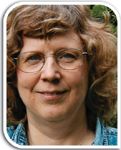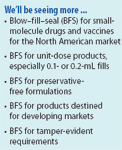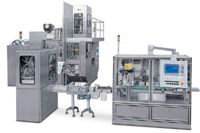News
Article
Pharmaceutical Technology
BFS Equipment Streamlines the Packaging Process
Author(s):
Aseptic blow–fill–seal minimizes human intervention in the packaging process.
The aseptic blow–fill–seal (BFS) process blow-molds unit- or multidose containers, fills sterile product, and hermetically seals the package in one highly automated machine. Because the BFS process eliminates human interventions in the filling environment, the biggest source of contamination, makers of ophthalmic, inhalation, and parenteral products such as biologics and vaccines find BFS technology appealing.

Hallie Forcinio
In fact, the US Pharmacopeia considers aseptic BFS to be an advanced aseptic process (1). "Aseptic BFS systems offer a unique combination of flexibility in packaging design, low operating cost, and a high degree of sterility assurance," explains Chuck Reed, director of sales and marketing at Weiler Engineering, (Elgin, IL), in a white paper titled "Advances in Aseptic Blow–Fill–Seal Processing of Pharmaceutical Liquids Improve Product Integrity and Patient Safety."
The blow-molding process itself helps achieve high sterility-assurance levels because it produces a container that is free of viable micro-organisms and endotoxins. Reed's white paper cites a study that shows fractional spore-contamination levels of less than 1 × 10–6 and a three-log reduction in endotoxins. The probability that the blow-molding process will create a nonsterile unit is roughly 1 in 1,000,000 (2).
The BFS process consists of the following five completely automated steps (3–4):
- Step 1: Thermoplastic resin such as high-density polyethylene or polypropylene is melted and extruded into a tubular shape or parison.
- Step 2: When the parison reaches the proper length, the mold closes and the parison is cut. The bottom is pinched shut, the top is held in place, and the mold is positioned under the blowing and filling nozzle.
- Step 3: The blow–fill nozzle descends into the mold and expands the parison with a jet of sterile compressed air or vacuum. Once the container is formed against the mold, the nozzle precisely fills sterile product into the container.
- Step 4: Separate sealing molds close to form the top and hermetically seal the container.
- Step 5: The mold opens and the sealed container exits the machine for inspection, labeling, and cartoning.
To minimize the operator intervention required for cleaning and changeover, the machine's product pathway is generally steam-sterilized in place in an automated process. In the fill zone, a laminar flow of positive-pressure sterile filtered air maintains International Organization for Standardization (ISO) 5 (Class 100) conditions. "The window of opportunity to have any type of contamination is very small," says Tim Kram, general manager at Rommelag USA (Evergreen, CO), a builder of BFS equipment (Bottelpack BFS machines). In addition, carefully designed ductwork and airflow manage the particulates generated when the parison is cut off.
Highly versatile, BFS is compatible with many products, container sizes, and packaging formats, including unit-dose containers. Virtually any viscous or suspension fluid can be accommodated, and liquid-handling systems can be configured to blend multi-ingredient formulations.

We will be seeing more â¦
BFS container options include vials, ampuls, bottles, plungerless syringes, and custom containers. Designs often are squeezable and may be equipped with bellows to aid dispensing. Containers also can incorporate a number of built-in features such as twist-off opening; dropper, stopper, piston, or cannula inserts; cutting-ring or self-piercing threaded closures; and Euro-Caps for infusion bottles.
Changeover time varies. If a BFS machine is used to make a family of containers, changing mold inserts to switch between 2-, 3- or 5-mL sizes, for example, can take two to four hours. Full mold changes will take longer, probably about eight hours. However, many pharmaceutical packaging lines minimize changeover downtime by dedicating machines to a single style and size of container or by running a narrow size range so only mold inserts need to be changed.
BFS container sizes extend from 0.1 to 10 L, although no single machine is capable of running this entire range. "BFS is especially well suited for small unit doses," says Kram, noting that it's impossible to buy a glass vial in a size smaller than 3 mL, and that prefilled syringes cost more than BFS containers.
Output speeds depend on the machine model, number of mold cavities, container size, container weight, type of resin, and product characteristics. Smaller containers can be produced faster (i.e., at a maximum rate of 500/ min), but the run rate for the largest sizes is not likely to exceed 30/min.
A typical automated line integrates the BFS machine with inspection equipment and, sometimes, cap welding, labeling, pouching–overwrapping, cartoning, or case packing. But inspection and secondary packaging operations are often performed off-line or even manually.
In general, every container is inspected. A visual inspection checks for particulates, while a high-voltage or vacuum leak test verifies container integrity. Inspection systems also may check container shape and lot number or date coding. Like that of other sterile packaging processes, the validation of aseptic BFS systems includes media fills and microbial challenges.

The servo-controlled, high-speed Bottelpack 4010M BFS machine eliminates hydraulic components and features a continuously rotating chain of molds. (IMAGE IS COURTESY OF ROMMELAG)
Costs
Initial capital costs and a well-established base of glass packaging lines remain hurdles to the adoption of BFS technology. Installing a BFS line at a brand-new site can easily cost $10 million. Although much of this investment relates to infrastructure and space for related operations such as compounding, resin handling, and quarantine, the price tag for a BFS machine is substantial, typically in the $1.5- to $2-million range. Prices for high-speed systems approach $4 million. Other costs relate to "the quality of staffing required for qualification, validation, and continued support," says Gary L. Hanley, business director and chief executive officer of Asept Pak (Malone, NY), a packager of sterile water, saline, technical products, and medical devices and owner of four BFS machines.
However, when one compares the overall cost of aseptic BFS with that of packaging in traditional sterile glass ampuls, vials, or bottles, BFS cuts expenses by about two-thirds because it eliminates the purchasing and storage step for containers and components, as well as handling related to cleaning, sterilizing, filling, and sealing. "If container forming, filling, and sealing can be done in one machine, you're light years ahead in labor and cost alone," explains Reed.
New technology
The latest BFS technology focuses on controls, container geometry, minimizing particulate generation, and improving the zones of protection around container formation, filling, and sealing. Thus, many machine designs feature dark and white sides. Positioning the extruder, electrical cabinet, and mechanical systems on the dark side in an unclassified area provides easy access for operators without disturbing the white side, which is housed in an ISO 8 (Class 100,000) cleanroom.
In the fill area of the machine, laminar air flow helps maintain ISO 5 (Class 100) conditions. In addition, some machines reduce particulate generation by replacing hot-knife parison cutting with an ultrasonic process. This change reportedly reduces particulate generate nearly 100% (KleenKut parison cutoff technology, Weiler Engineering).
Some of the newest BFS machines are fully digital and have eliminated hydraulics. "These machines can run faster and more accurately," says Kram. In addition, self-diagnostics inside the servo drives can provide early alerts of impending problems (Bottelpack 4010M, 324M, and 362 BFS machines, Rommelag).
Although most BFS machines are designed to produce monolayer containers, multilayer technology is available to address needs for barrier properties or product–package compatibility issues. Although three to seven layers are feasible, barrier structures typically consist of five layers with a center layer of ethylene vinyl alcohol and can eliminate the need for the foil overwrap normally used as secondary packaging for carbon-dioxide- or oxygen-sensitive products.
Recommendations for newcomers
When starting up a BFS operation, Reed recommends that plans include space and infrastructure for at least two machines, even if the second machine is not purchased immediately. "The flexibility that you get from having two machines soon pays for itself," he explains.

BFS technology is particularly well-suited for small-volume parenteral ampuls. (IMAGE IS COURTESY OF WEILER ENGINEERING)
To reduce expenses, newcomers to BFS technology sometimes purchase used equipment or request the services of a contract packager, particularly if product volumes are relatively low. Rebuilt and reconditioned machines are updated with advanced controls and meet the latest standards. "Buying rebuilt equipment offers an opportunity to enter the BFS arena at a reduced cost [typically less than $1 million for the machine]," says Bill Grabowski, president and chief executive officer of HealthStar (Braintree, MA), a contract packager of nonsterile BFS products, moldmaker, and rebuilder of Weiler BFS machines. Used machines also may be the answer to tight lead-time requirements because they typically are delivered in six or seven months. In contrast, brand new machines usually are delivered in a year or more.
Hanley advises meeting with vendors for an in-depth introduction to the equipment. He also stresses the importance of studying the entire process when integrating up- and downstream systems, especially if multiple vendors are involved. He recommends that purchasers of BFS technology assess final product configuration, automated inspection, vacuum testing, and overwrap requirements, as well as the possibility of terminal sterilization. In addition, he says, newcomers to BFS need to understand "the amount and degree of process support needed. It's simple to just buy a machine, but very costly and time-intense to put the machine online and meet the [regulatory] requirements for doing so."
Hal Baseman, principal and chief operating officer of ValSource (Downingtown, PA), a firm specializing in validation support, also stresses the need for up-front study to understand the process and the limitations of the line. "You want to be able to eliminate variables or at least control them," he explains, "so it's essential to determine the critical variables in the process and identify what to test." As a result, validation teams should include expertise in risk assessment as well as process development, engineering, and microbiology.
In addition, Baseman says, "regulators expect [validation] study designs with a sound scientific and statistical basis." However, before the validation process begins, it's imperative that the line be running well with a low level of defects. "You can't validate until it's working right," he concludes.
Helpful resources for BFS packaging operations include FDA's November 2008 Draft Guidance for Industry, Process Validation: General Principles and Practices. Although the agency accepts comments on guidance documents at any time, it's in the process of finalizing the draft based on input received as of March 16, 2009.
Process validation, process design, and operation specifically related to BFS systems are the purview of a task force established by the Parenteral Drug Association. The Manufacture of Sterile Pharmaceuticals and Liquid Medical Devices Using Blow–Fill–Seal Technology Task Force is working with the Pharmaceutical BFS International Operators Association and regulators to identify best practices and develop guidance.
Hallie Forcinio is Pharmaceutical Technology's Packaging Forum editor, 4708 Morningside Drive, Cleveland, OH 44109, tel. 216.351.5824, fax 216.351.5684, editorhal@cs.com.
References
1. USP 28 General Chapter <1116>, "Microbiological Evaluation of Clean Rooms and Other Controlled Environments," (US Pharmacopeial Convention, Rockville, MD, 2002), p. 2682.
2. F. Leo et al., J. Pharm. Sci. Technol. 58 (3), 147–158 (2004).
3. Weiler Engineering, "Safeguarding Solutions Through Innovative Packaging" brochure (Weiler, Elgin, IL, 2007).
4. Rommelag, "Bottelpack Packaging System for Liquids" brochure (Rommelag, Buchs, Switzerland, 2006).
Newsletter
Get the essential updates shaping the future of pharma manufacturing and compliance—subscribe today to Pharmaceutical Technology and never miss a breakthrough.






